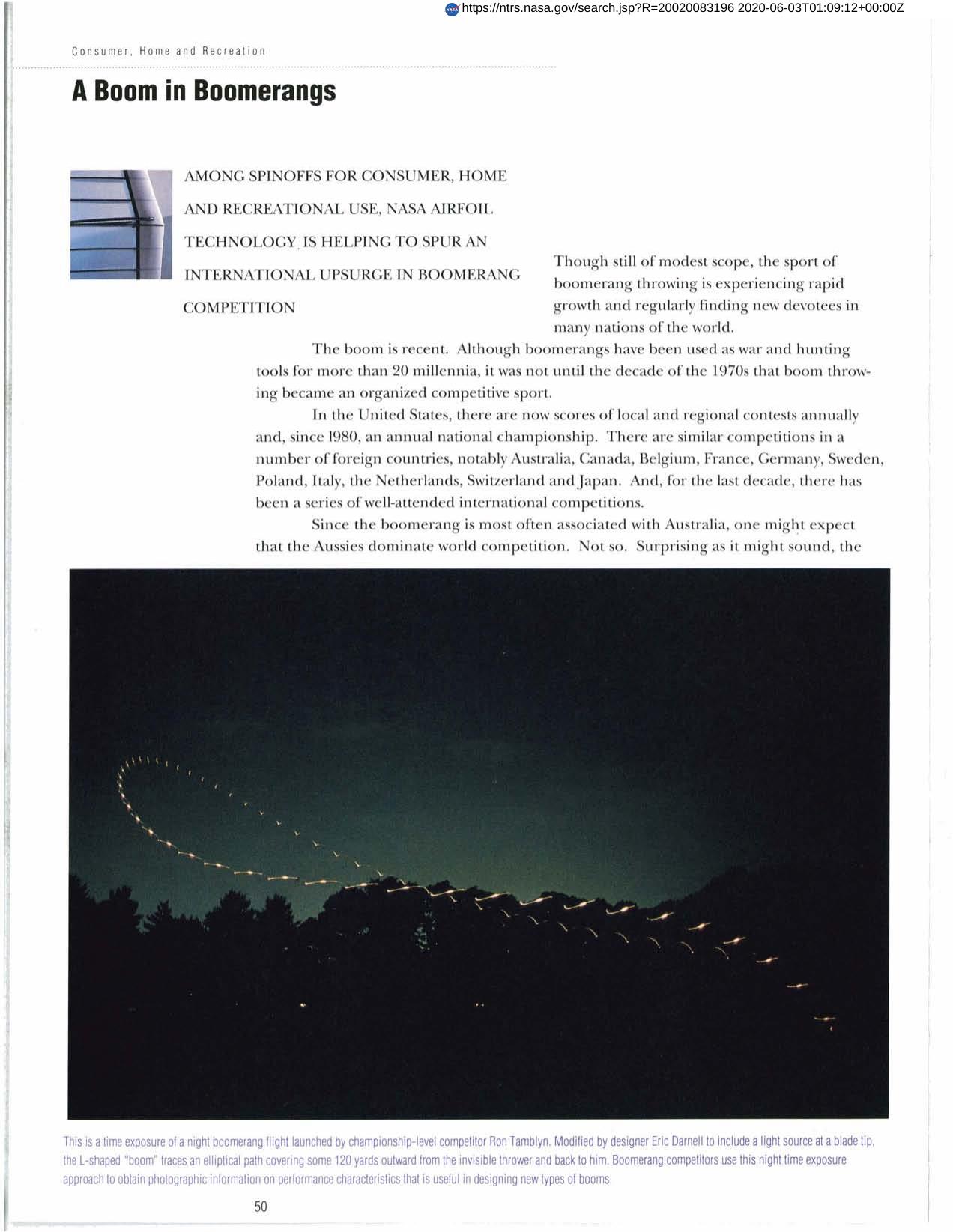
A Boom in Boomerangs
Ted Bailey, a highly-ranked international boomerang designer and thrower, used information from a variety of NASA technical reports on aerodynamics and low-speed airfoils to design more competitive boomerangs. Because the boomerang is essentially an airfoil like an airplane wing, the technology transferred effectively and even contributed to the 1981 American victory over Australian throwers. In 1985, using four NASA reports, Bailey designed a new MTA (maximum time aloft) boomerang that broke the one-minute barrier, enabled throwers to throw and catch in less than three minutes and allowed competitors to complete the difficult Super Catch" - five throw/catch sequences after launching the original boom while it is still aloft. Bailey is now considering other boomerang applications."
Full article: http://hdl.handle.net/hdl:2060/20020083196

A Boom in Boomerangs

A Boom in Boomerangs













